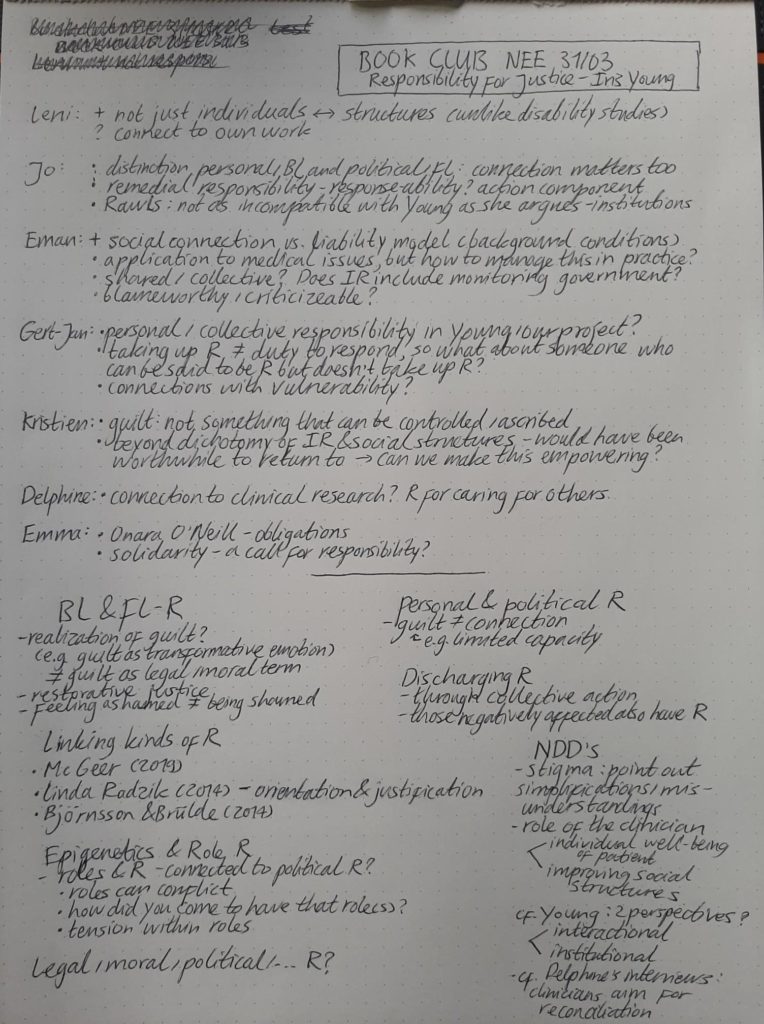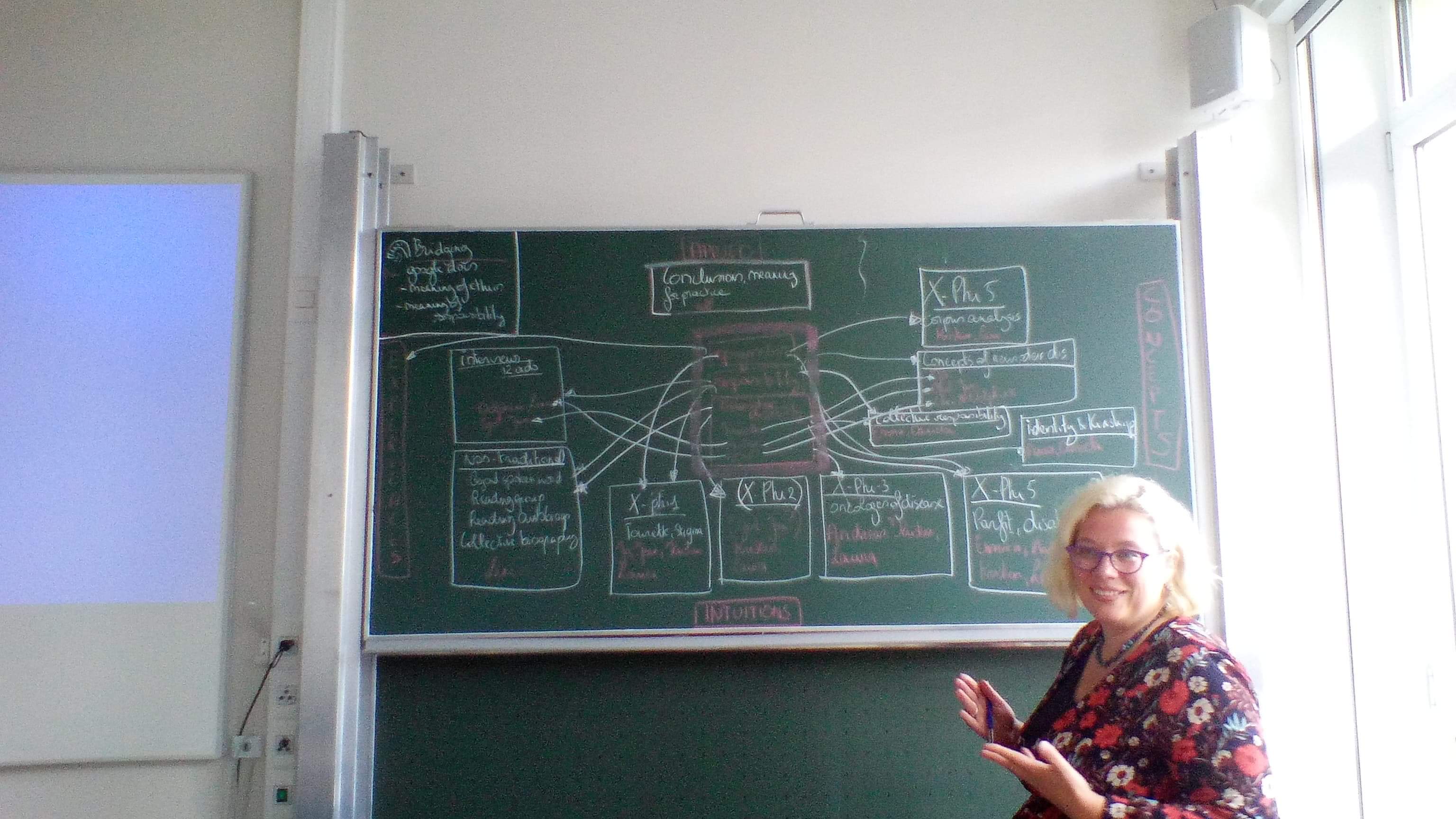Unfortunately, Coronavirus required us to cancel our yearly team meeting where we would have been so very happy to welcome Prof. Eva Jablonka, one of the pioneers in epigenetic research and theorizing. Fortunately we had the opportunity of discussing her work online with her on the 5th of May 2020. We specifically focused on the book she wrote together with Prof. Marion Lamb: Evolution in Four Dimensions (2nd edition, 2014). It was a most lively discussion where the neurological and, mainly, the ethical were prominently present. We provide a very short reflection belo
w but not without first thanking all the friends of the NeuroEpigenEthics team who joined the discussion showing the value of interdisciplinary thinking: Luca Chiapperino (Science and Technology Studies, University Lausanne), Wim Van Daele (anthropologist, University Agder), Wim Vanden Berghe (microbiologist, University of Antwerp) and Sander Van de Cruys (experimental psychologist, University of Leuven). Covid-19 may keep us in a physical bubble, we remain determined to continue breaking academic bubbles!
We dug right in with a question on whether epigenetic effects should always be framed in the negative. The answer of Prof. Jablonka was as balanced as her work on evolution: she was not in favor of claiming epigenetics as the be all and end all of all science. She sees it rather as an additional tool in a truly transdisciplinary toolkit. On the one hand, we have to consider that there is a lot of unpredictability in epigenetic effects. A lack of stress following a ‘good’ lifestyle may well stabilize problematic effects while some stress triggers plasticity that enables learning and discovering better solutions. On the other hand, as is the core of the ideas in Evolution in Four Dimensions epigenetics really is the crossroads of biological and cultural drivers of evolution. As worked out in the paper Cultural Epigenetics (Jablonka 2016) this means one always has to consider, at least, these 2 perspectives. The example given was very much à propos the NeuroEpigenEthics mission: one can look at ADHD as a problem for which some microbiological cure is to be found, or one can look at it socially as an affordance opening up new potential. Biology has a place in both perspectives, but it will, in the second perspective, focus more on something Richard Lewontin called “meta-plasticity”. This perspective will avoid trying to fix things from a point of view of current standards and allow to be more open to creative opportunities evolution affords in creating new potential.
This discussion naturally led to a question on relation between epigenetics and normative issues. Prof. Eva Jablonka here first drew attention to the application of Waddington’s landscape metaphor (Waddington 1957) to the social dimension. A norm can in this metaphor be seen as a strong attractor canalizing the development of organism in a direction of what are ‘stable social arrangements’. In work she co-authored (Tavory, Jablonka and Ginsburg 2012) it is explained how for instance poverty can be self-perpetuating until some change (as fortunately has happened to some extent with feminism and homosexuality) to some of the key stabilizers takes root. Unfortunately, only a case-by-case interdisciplinary study of the broad epigenetic landscape can help to identify how to uproot oppressive stabilizers so no simplifying messages here. Still we can see that there always is a dynamic between the individual change agents and some level of collective responsibility (see our discussion on Iris Marion Young for a helpful way of conceptualizing this dynamic!). Again, epigenetics is not saying things are cast in stone but rather that wherever there is canalization there are, always also, permeable boundaries allowing evolutionary plasticity to overthrow attractors.
This use of the Waddingtonian metaphor invited a long discussion on how to understand it, and specifically how to understand interactions between the genetic and social dimensions as well as the possibilities for change afforded to individual agency. Prof. Eva Jablonka did in this discussion refer to the paper she and Noble published recently (2019) in which they tried (see photograph below) to extend the metaphor to show this interaction. In it, the lower pegs are the genes as per Waddington’s original drawing but the top parachute shows the social and environmental influence on development. This allows to visualize that we aren’t just canalized by our biology but that if we change social circumstances we can – and do – have an impact on this development. Feminism and queer studies in this way have had an impact on the development outlook of more than half of the world’s population although as regards poverty we clearly have much more to do to destabilize the dynamics.
A snapshot from our discussion: on the right the adaptation of Waddington’s landscape as per Jablonka and Noble (2019), on the left Eva Jablonka, Kristien Hens (University Antwerp), Luca Chiapperino (University Lausanne) and Sander Van de Cruys (University of Leuven).
Our discussion went on for three hours and still there was much more to be said. Not only on the visualization of the epigenetic landscape (how to depict the complementary aspects of plasticity and canalization that were already the focus of Waddington’s original work) but also on how to translate these insights into the clinical and bioethical discourse, where the simplicity of the ‘traditional’ genetic model is still a very strong attractor for patients as well as clinicians. So we left it as a To Be Continued, grateful for Prof. Eva Jablonka’s time and happy that these are the very questions we pursue in our project. The last word we give to our guest: “The dynamic of stability always comes together with a dynamics of change.”
Jo Bervoets
References:
Waddington, Conrad Hall. 1957. “The Strategy of the Genes”. London: Allen & Unwin.


